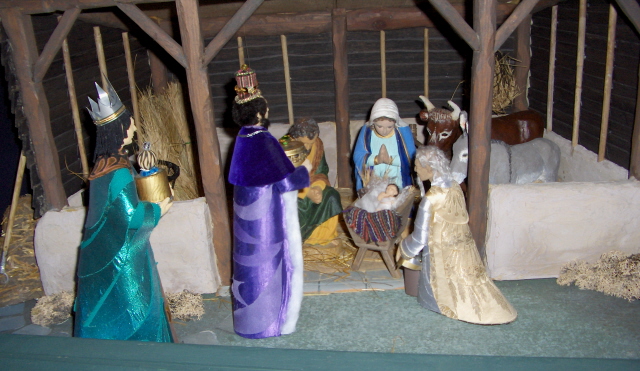After Jesus was born in Bethlehem he was visited first by the shepherds and later by the Wise Men. They came from the East to Jerusalem, asking, “Where is the child who has been born king of the Jews? For we observed his star at its rising, and have come to pay him homage” (NRSV, Matthew 2:1-2).
When they came to Bethlehem, the star which had guided them on their long journey stopped over the place where the Holy Child was. And they came into the house and saw the Child with Mary, and they knelt before him and worshipped him. “Then, opening their treasure-chests, they offered him gifts of gold, frankincense, and myrrh” (NRSV, Matthew 2:11). By gold they meant that he was a King, and by their frankincense they showed that he was God. The myrrh was a sign of his future suffering.
We remember this visit on the Feast of the Epiphany which we celebrate on January 6th or the nearest Sunday. Epiphany comes from the Greek word epiphaneia. It means a ‘manifestation’ or ‘making known’ for on that day Jesus made himself known as God and King to the Wise Men. The Wise Men were Gentiles, which means they were not Jews. So the fact that Jesus made himself known to them, shows that he is for people of all races.
Another manifestation, which we celebrate soon after the Epiphany, is the Baptism of Christ when God revealed that Jesus was his Son – “This is my Son, the Beloved…” (NRSV, Matthew 3:17). Yet another manifestation occurred at the wedding feast at Cana, when Jesus changed water into wine. This was “the first of his signs” and he “revealed his glory; and his disciples believed in him” (NRSV, John 2:11).
The liturgical colour for the Epiphany is white for joy.
Short talks
Short talks for the Epiphany entitled The Star of Bethlehem, The Three Gifts, The Sunday Eucharist, Joyful worship and Herod and the three kings are available in this section of the Holy Faith website. See also the Marriage Feast at Cana Up to the brim in section on Miracles
Epiphany crib at the Parish Church of St Peter and St Paul, West Wittering, England
